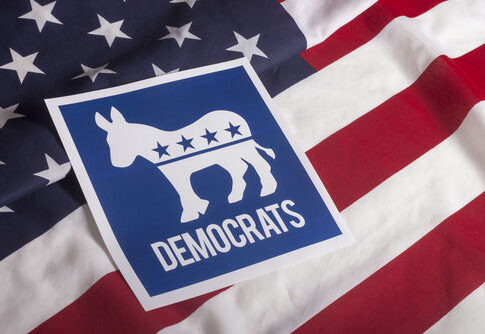In a stunning display of public dissatisfaction, congressional Democrats have sunk to their lowest approval ratings in history, leaving many to wonder if they can recover from this unprecedented crisis.
Historic Low Approval Ratings
In July 2025, a Quinnipiac University Poll revealed a staggering 19% approval rating for congressional Democrats, the lowest since the poll began in 2009. This marks a significant decline from previous lows, as Democrats have struggled to effectively counter President Trump’s assertive policy moves. The party’s inability to block major GOP-backed bills, including an extensive spending bill in April 2025, highlights their legislative impotence. Such failures have left Democratic voters increasingly disillusioned.
Democrats lost control of the Senate and suffered losses in the House during the 2024 midterms. This loss of power has severely weakened their legislative influence. The GOP’s ability to pass the One Big Beautiful Bill Act and a pending $9.4 billion rescissions package targeting liberal priorities underscores their legislative dominance. Democrats, meanwhile, appear to be struggling to find a unified message or effective leadership to rally their base.
Leadership Void and Internal Struggles
Key figures like Hakeem Jeffries and Chuck Schumer are facing criticism for the lack of direction within the Democratic Party. The leadership vacuum is a significant contributor to the party’s current woes. With no clear figure emerging to articulate a compelling alternative to Trump’s agenda, Democrats are left floundering. This lack of strong leadership is deeply troubling for a party that once prided itself on progressive ideals and effective governance.
🚨HOLY CRAP!!! Tonight a demoralized Donald Trump called into a right-wing TV station, venting against "naive Republicans" for believing the "Jeffrey Epstein hoax" that's "put out by the Democrats."
This is only getting worse for Trump. pic.twitter.com/kCL5D6XTDZ
— CALL TO ACTIVISM (@CalltoActivism) July 17, 2025
Young voters, a vital part of the Democratic base, are particularly disillusioned. Approval ratings among those under 30 have plummeted to 23%, as per a Harvard Kennedy School poll. The failure to engage this demographic, coupled with internal party divisions between the establishment and progressive wings, has further weakened the party’s cohesion and effectiveness.
Republican Gains and Democratic Disarray
The Republican Party is capitalizing on the Democratic Party’s disarray. With a unified front, the GOP is pushing through aggressive legislative goals, including a $9.4 billion rescissions package targeting programs like USAID, NPR, and PBS. The lack of effective Democratic opposition has emboldened Republicans, allowing them to reshape federal priorities with little resistance.
This situation poses a significant threat to public institutions and media diversity. The potential defunding of NPR and PBS could weaken public media infrastructure and reduce access to independent news. Meanwhile, Democrats are left grappling with low approval ratings, diminishing their negotiating power and ability to shape policy outcomes.
Long-Term Implications for Democrats
The implications of this crisis are substantial. In the short term, low approval ratings are demoralizing for Democratic activists, donors, and candidates. This could lead to suppressed voter turnout and fundraising difficulties. In the long term, persistent low approval could jeopardize Democratic chances in the 2026 midterms, risking further losses in Congress.
Approval Rating Of The Democratic Party
🟢 Approve: 30% (-32)
🔴 Disapprove: 62%YouGov | 6/27-30 | 1,648 A pic.twitter.com/AvAb8QZUxS
— OSZ (@OpenSourceZone) July 4, 2025
Moreover, ongoing dissatisfaction may lead to primary challenges, leadership changes, or a shift toward more populist and progressive strategies. The alienation of young voters could have lasting effects on the party’s demographics and coalition-building efforts. Without a radical change in strategy and leadership, Democrats risk further erosion of their influence and viability in the political landscape.


